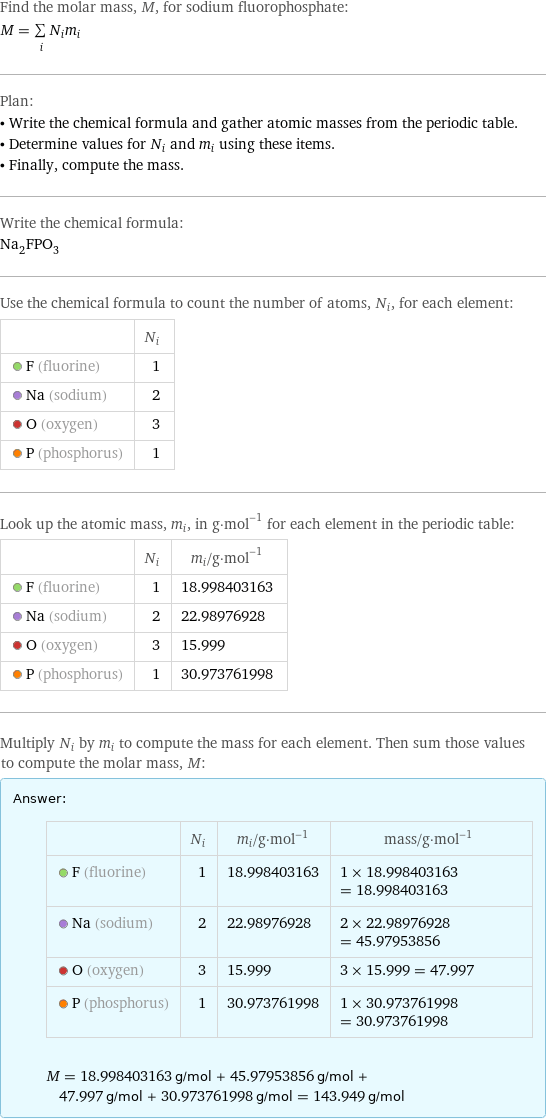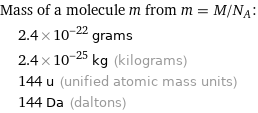Input interpretation

sodium fluorophosphate | molar mass
Result

Find the molar mass, M, for sodium fluorophosphate: M = sum _iN_im_i Plan: • Write the chemical formula and gather atomic masses from the periodic table. • Determine values for N_i and m_i using these items. • Finally, compute the mass. Write the chemical formula: Na_2FPO_3 Use the chemical formula to count the number of atoms, N_i, for each element: | N_i F (fluorine) | 1 Na (sodium) | 2 O (oxygen) | 3 P (phosphorus) | 1 Look up the atomic mass, m_i, in g·mol^(-1) for each element in the periodic table: | N_i | m_i/g·mol^(-1) F (fluorine) | 1 | 18.998403163 Na (sodium) | 2 | 22.98976928 O (oxygen) | 3 | 15.999 P (phosphorus) | 1 | 30.973761998 Multiply N_i by m_i to compute the mass for each element. Then sum those values to compute the molar mass, M: Answer: | | | N_i | m_i/g·mol^(-1) | mass/g·mol^(-1) F (fluorine) | 1 | 18.998403163 | 1 × 18.998403163 = 18.998403163 Na (sodium) | 2 | 22.98976928 | 2 × 22.98976928 = 45.97953856 O (oxygen) | 3 | 15.999 | 3 × 15.999 = 47.997 P (phosphorus) | 1 | 30.973761998 | 1 × 30.973761998 = 30.973761998 M = 18.998403163 g/mol + 45.97953856 g/mol + 47.997 g/mol + 30.973761998 g/mol = 143.949 g/mol
Unit conversion

0.14395 kg/mol (kilograms per mole)
Comparisons

≈ ( 0.2 ≈ 1/5 ) × molar mass of fullerene ( ≈ 721 g/mol )

≈ 0.74 × molar mass of caffeine ( ≈ 194 g/mol )

≈ 2.5 × molar mass of sodium chloride ( ≈ 58 g/mol )
Corresponding quantities

Mass of a molecule m from m = M/N_A: | 2.4×10^-22 grams | 2.4×10^-25 kg (kilograms) | 144 u (unified atomic mass units) | 144 Da (daltons)

Relative molecular mass M_r from M_r = M_u/M: | 144